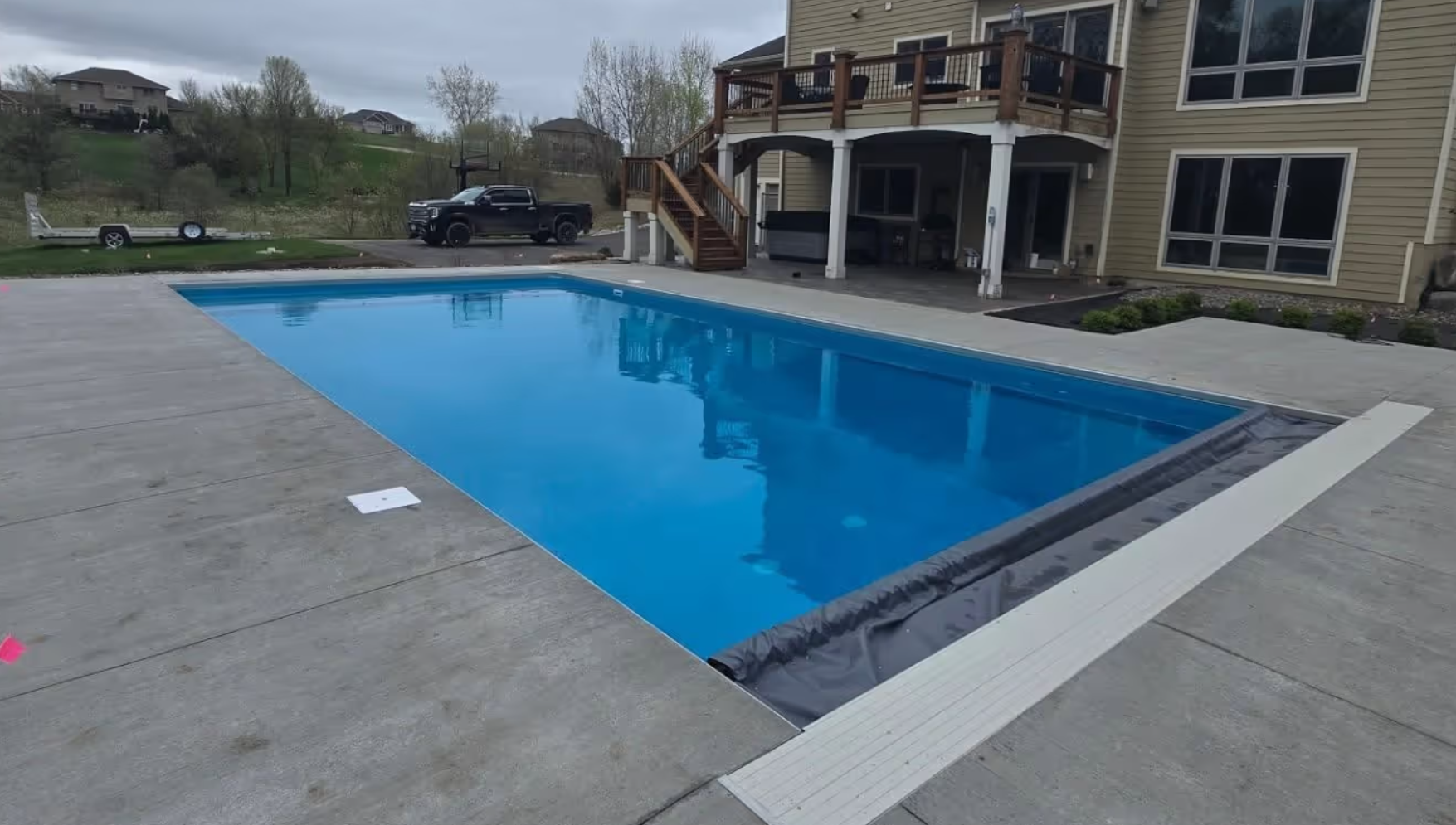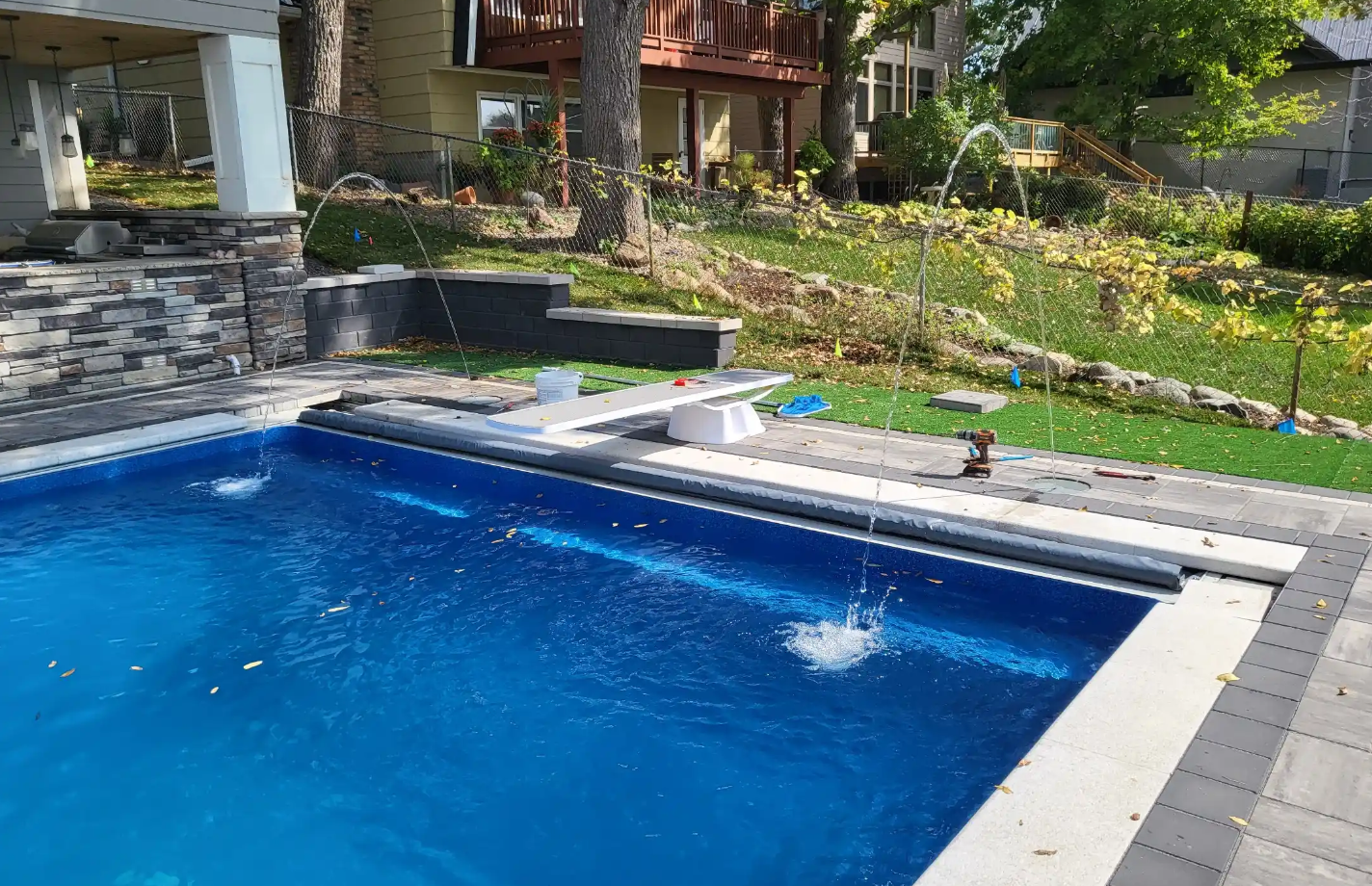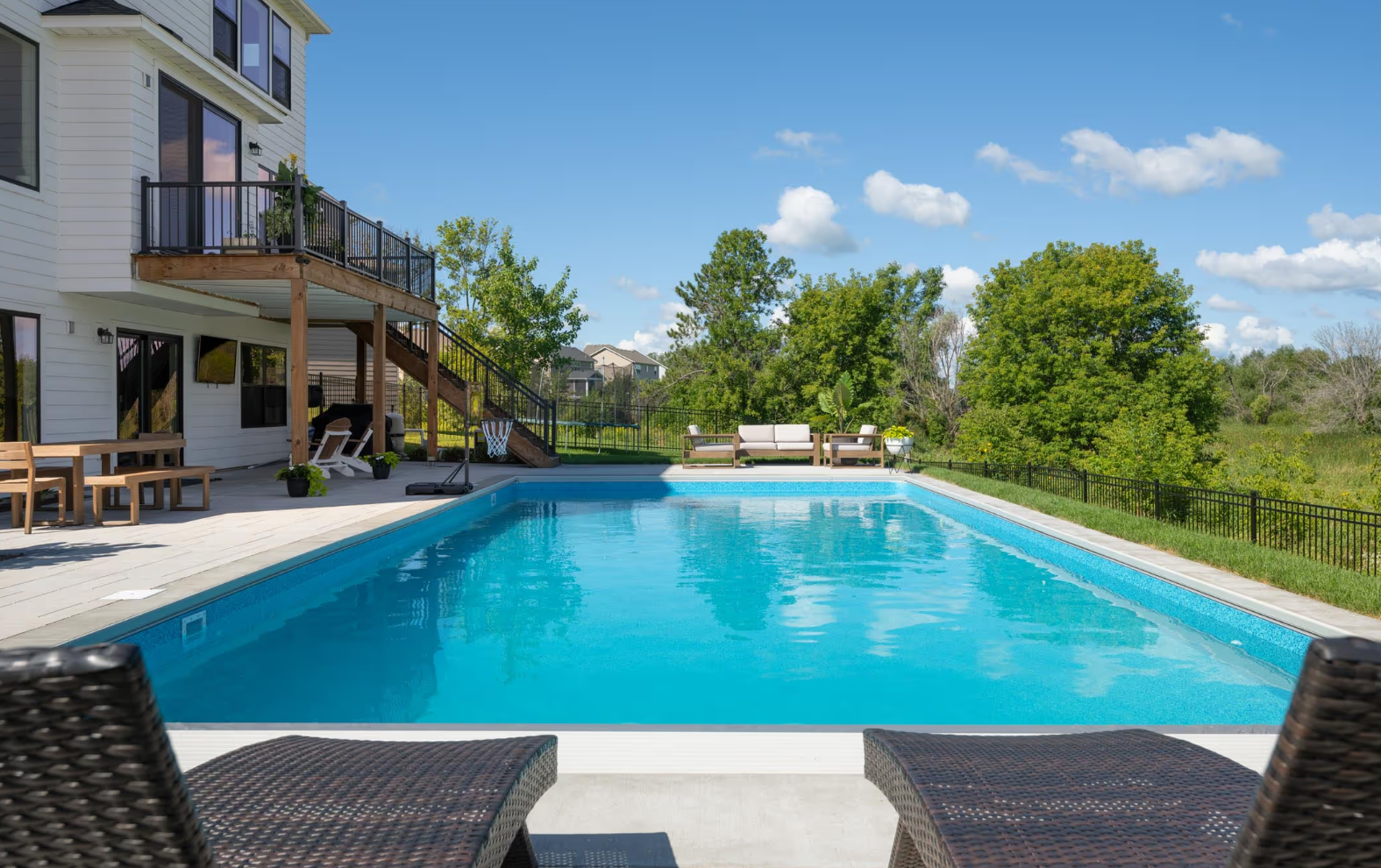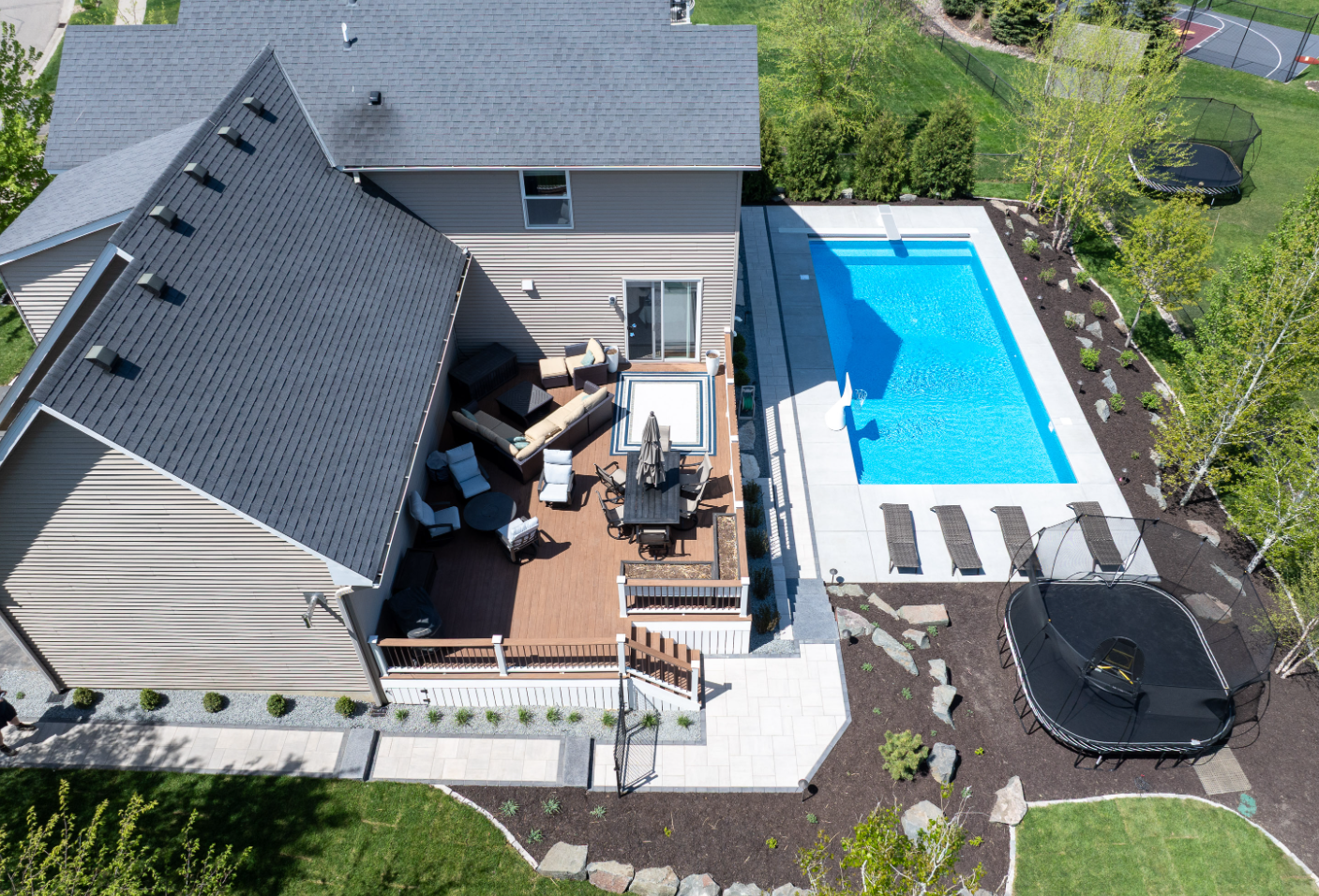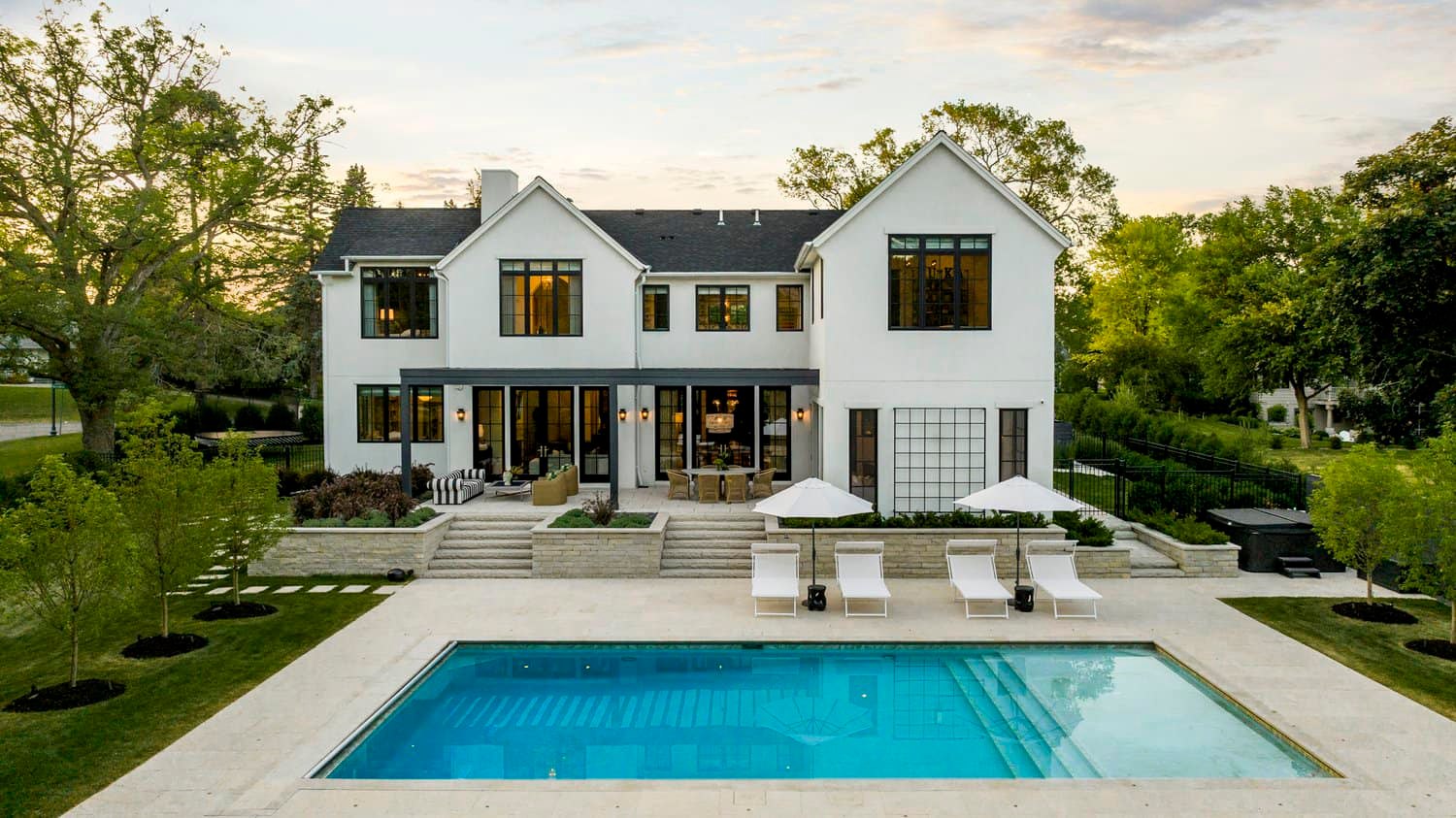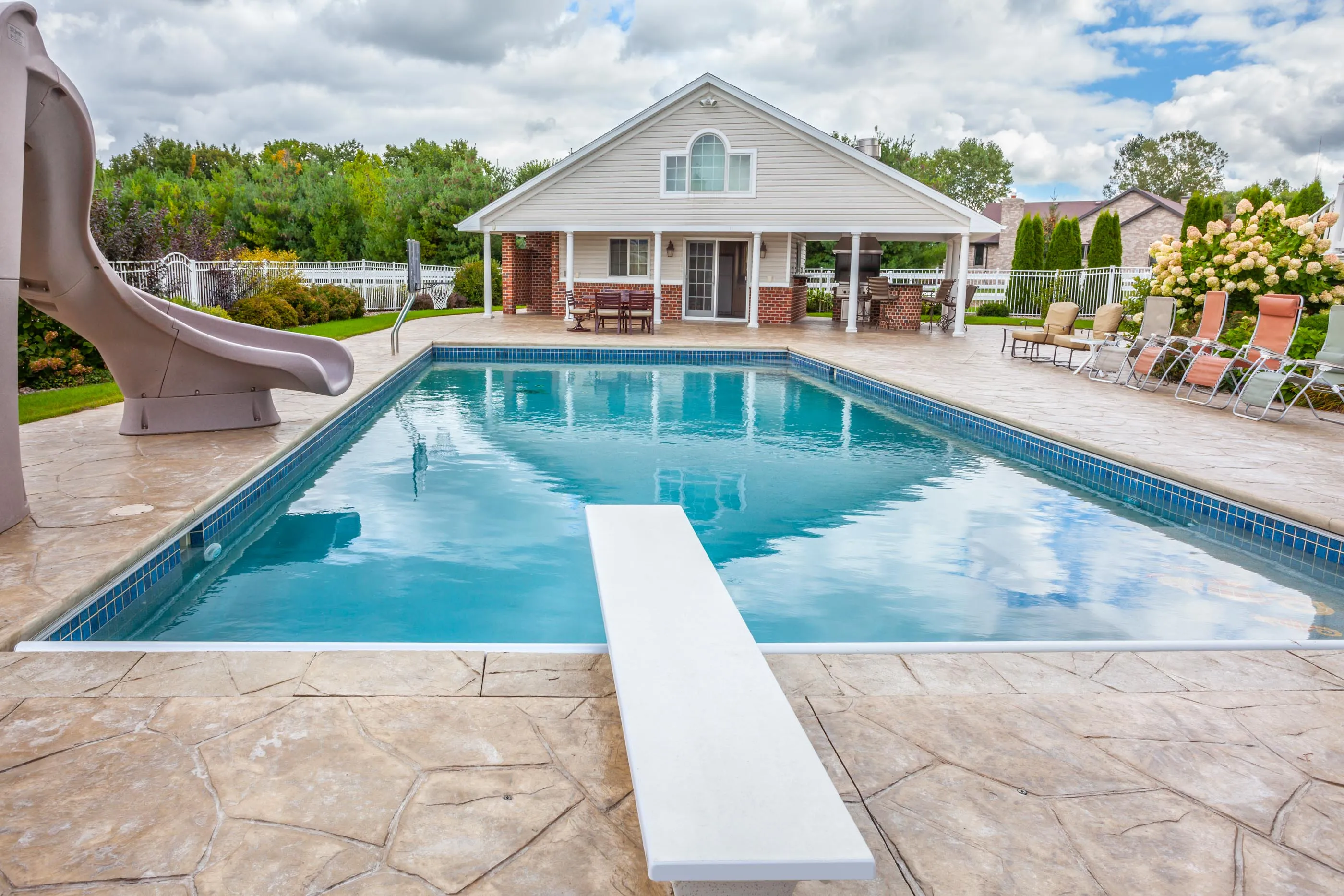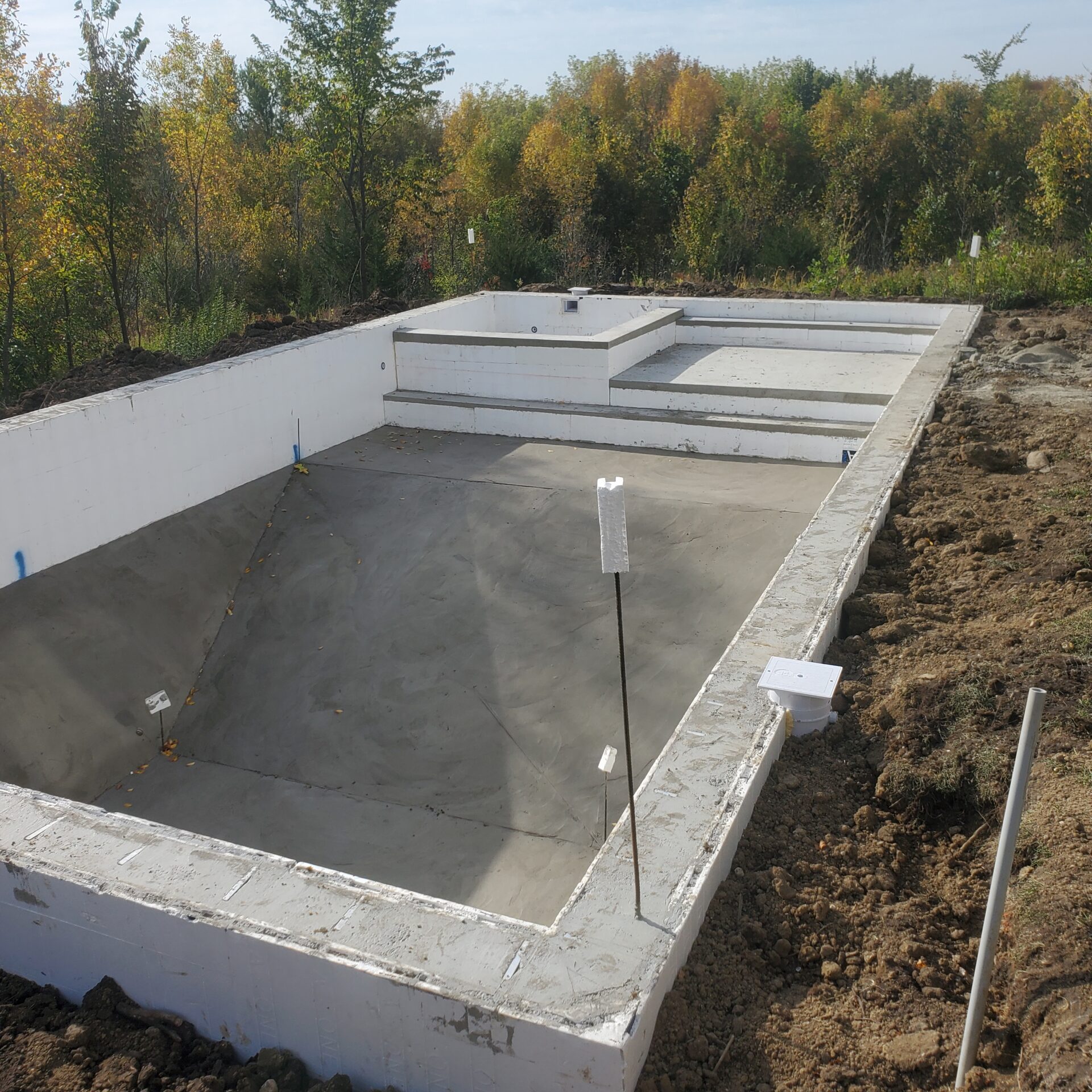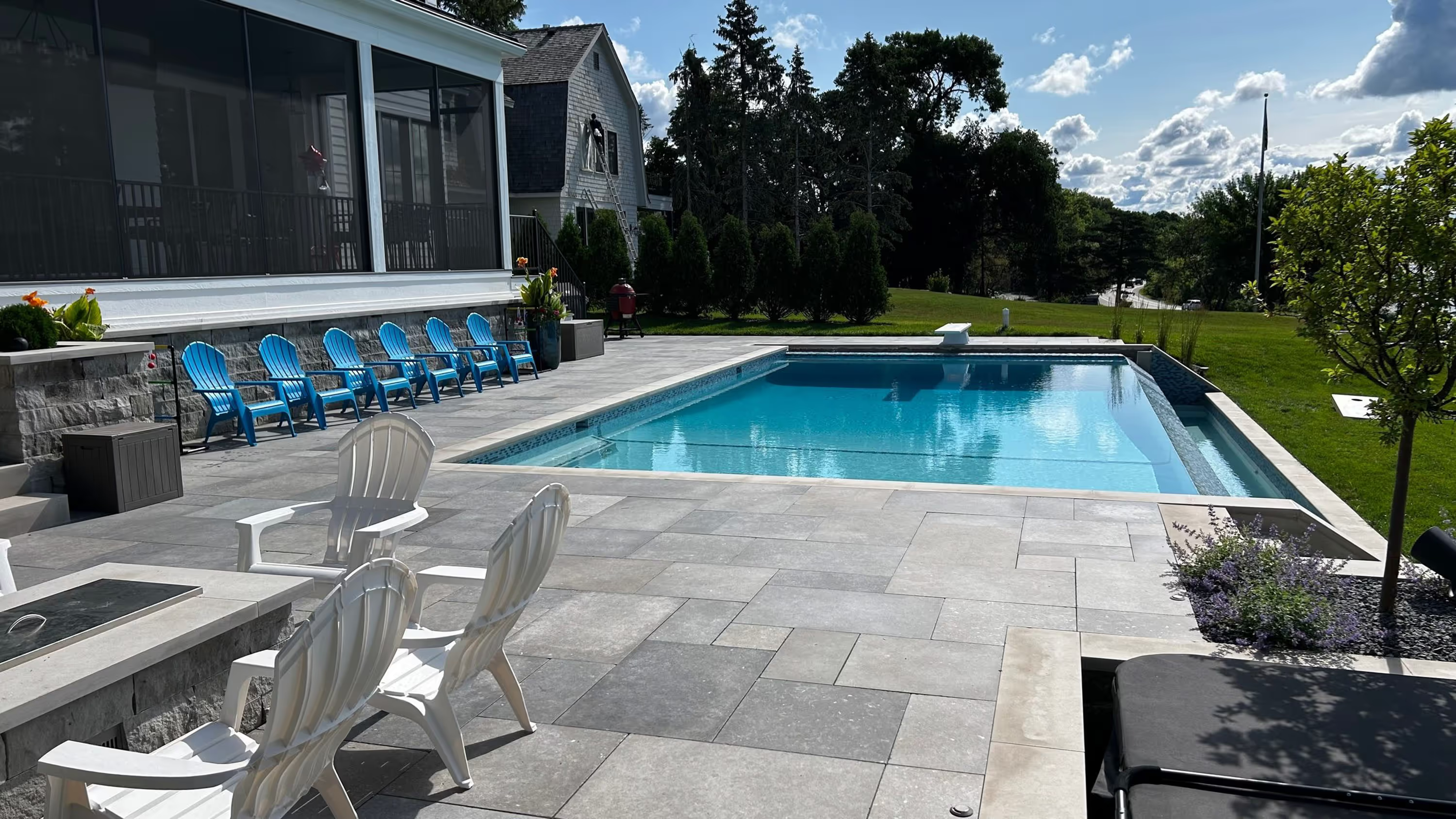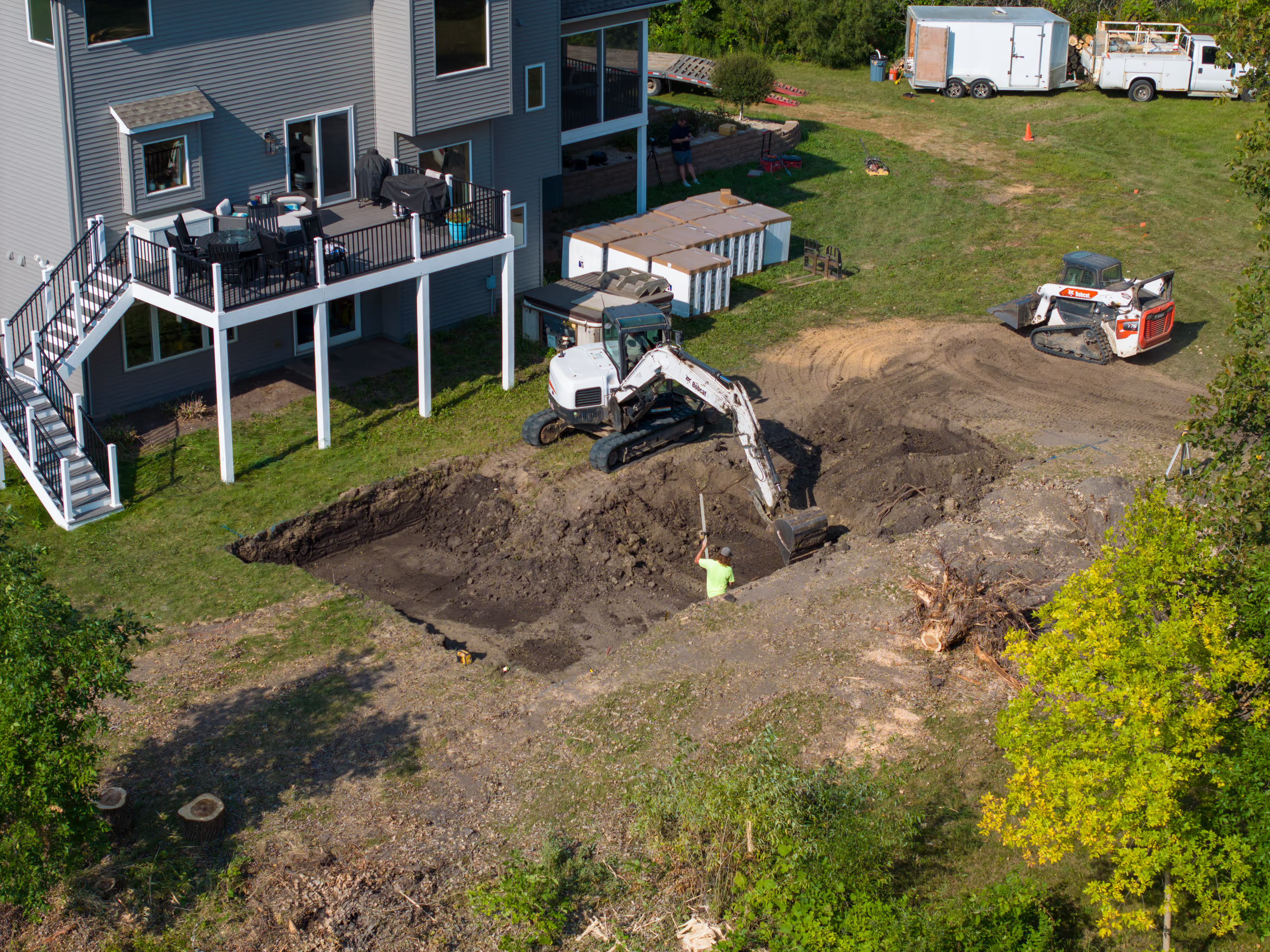Learn what temperature threshold signals you should close your pool for the season.

Protecting your investment starts with knowing when to close down your inground swimming pool for winter.
Minnesota pool owners face a unique challenge every fall. You want to squeeze every possible swim out of your precious warm-weather season, but waiting too long to close your backyard swimming pool can lead to costly damage and unnecessary repairs.
The good news? With Plan Pools' ICF construction and superior insulation, you'll extend your swimming season significantly compared to traditional steel wall pools.
You must close your backyard inground swimming pool when nighttime temperatures consistently drop below 50°F.
Here's why this temperature matters for Minnesota swimming pool owners:
When water temperatures drop below 50 degrees Fahrenheit, several problems emerge that threaten your pool system. Your pool equipment becomes vulnerable to freeze damage, your salt chlorination system stops functioning effectively, and algae growth patterns change dramatically, making water chemistry management extremely difficult.
In the Twin Cities metro area, this typically means closing your swimming pool between late September and mid-October, depending on the specific fall weather patterns.
Many swimming pool contractors will give you a calendar date to close your pool. That's a mistake.
Minnesota weather is unpredictable. Some years bring Indian summer weather well into October, while other years see frost warnings in September. That's why temperature monitoring is crucial for protecting your backyard swimming pool investment.
Key temperature milestones to watch:
Delaying your swimming pool closing beyond the safe temperature threshold creates serious risks:
Your pool pump, filter system, salt chlorination system, and automation equipment all contain water. When temperatures drop to freezing, this water expands and cracks expensive components. A single freeze event can cost thousands in repairs to your swimming pool system.
The underground plumbing serving your inground swimming pool is particularly vulnerable. When water freezes in pipes, the expansion creates cracks and ruptures that won't show up until spring opening. These hidden failures lead to catastrophic leaks and expensive emergency repairs from your pool contractor.
Ice formation under your pool cover creates tears and stress points. The freeze-thaw cycles Minnesota experiences can also damage your concrete pool deck, especially around the coping where water accumulates.
At temperatures below 50°F, your chlorination system struggles to maintain proper chemistry. This allows algae blooms and bacteria growth that will greet you with green, cloudy water when spring arrives.
One major benefit of Plan Pools' ICF insulated concrete construction is significantly longer pool season enjoyment.
Our insulated concrete form (ICF) walls feature two layers of thick, hardened foam insulation on both sides of the pool structure. This double insulation provides dramatically lower heating costs and keeps your water temperature comfortable longer into fall.
With a Plan Pools ICF swimming pool, you'll enjoy:
Compare this to traditional steel wall pools built by other pool contractors in Minneapolis and St. Paul. Steel walls actually conduct heat away from your water, creating a cooling effect that forces earlier closing dates and higher heating costs throughout the season.
When temperatures signal it's time to close your backyard inground swimming pool, follow this proven process that protects your investment:
Two weeks before closing, bring your water chemistry to optimal levels. This prevents corrosion and scale buildup during winter months. Your salt chlorination system should be balanced, pH levels adjusted, and alkalinity stabilized.
Remove all debris, brush walls and floor, and vacuum thoroughly. Any organic material left behind will decompose over winter, creating stains and chemistry problems for spring opening.
Drop your water level below the skimmer opening and pool return jets. This prevents freeze damage to these critical components. With Plan Pools' superior construction, you don't need to worry about structural issues from lowered water levels like you would with steel wall pools.
Drain your pump, filter, heater, and salt chlorination system completely. Blow out all plumbing lines using compressed air to remove any trapped water. This step is absolutely critical for Minnesota swimming pool owners.
Apply winter algaecide and adjust chlorine levels according to your pool contractor's recommendations. This maintains water quality and prevents expensive spring cleanup.
Your automatic safety cover or winter cover should be properly secured. Plan Pools includes premium pool cover systems that protect your investment and make spring opening easier.
Swimming pool contractors serving Lakeville, Prior Lake, Shakopee, and the entire Twin Cities metro area need to account for our unique climate challenges.
Minnesota experiences numerous freeze-thaw cycles throughout fall and spring. Plan Pools' ICF construction handles these temperature swings far better than steel wall pools. Our concrete walls won't rust, corrode, or shift like traditional swimming pool construction methods.
One often-overlooked advantage of ICF construction is superior soil compaction behind pool walls. Steel wall pools require support systems that prevent proper backfilling. This leads to settling and movement during freeze-thaw cycles.
Plan Pools' construction allows complete compaction of soil around your pool structure. This means your pool deck, hardscape, and entire swimming pool system remain stable through Minnesota's harsh winters.
Some Minnesota swimming pool owners prefer closing early (mid-September) to avoid any risk. Others push their season as late as possible, sometimes into November with heated pools.
With Plan Pools' energy-efficient ICF construction, you have more flexibility than pool owners with traditional steel wall construction.
Early Closing Benefits:
Extended Season Benefits:
Working with hundreds of Twin Cities swimming pool owners, we've seen these common mistakes that cost money and create spring headaches:
Gambling on "just one more week" when nighttime temperatures consistently hit the 40s. One unexpected freeze can cost thousands in equipment damage that your pool contractor will need to repair.
Skipping steps in the closing process to save time. Every shortcut creates risk. Proper winterization from a professional swimming pool contractor protects your investment.
Using inadequate or worn-out pool covers. Your pool cover is your primary defense against debris, ice damage, and algae growth. Plan Pools includes premium automatic safety covers with every installation.
Failing to ensure water drains away from your pool deck. Standing water creates ice dams and accelerates concrete damage during freeze-thaw cycles.
The construction method your pool contractor uses determines more than just summer enjoyment. It affects your entire ownership experience, including winter protection and spring opening.
Plan Pools' insulated concrete form (ICF) construction provides:
Better Freeze Protection: Thicker walls than house foundations that handle Minnesota winters without shifting or cracking
Superior Insulation: Keeps your pool warmer longer into fall and helps protect against unexpected freezes
No Rust Concerns: Unlike steel wall pools that corrode when exposed to salt chlorination systems
Structural Integrity: Walls that won't shift, move, or develop leaks from freeze-thaw cycles
Lifetime Warranty: Confidence that your pool structure will outlast your home's foundation
When you're ready to build your backyard swimming pool, choose a swimming pool contractor who understands Minnesota's unique challenges. Plan Pools has perfected ICF construction across hundreds of installations in Minneapolis, St. Paul, and throughout the Twin Cities.
Don't settle for steel wall pool construction that forces early closing and high heating costs.
Plan Pools delivers custom inground swimming pools with ICF insulated construction that keeps you swimming longer, costs less to heat, and provides superior protection against Minnesota's harsh climate.
Get started today:
Your backyard oasis awaits - built to handle Minnesota winters and maximize your summer enjoyment.

